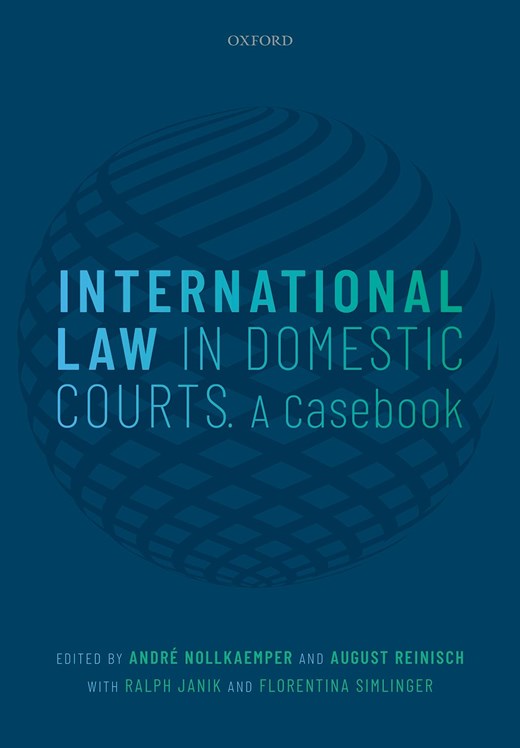 International Law in Domestic Courts: A Casebook
International Law in Domestic Courts: A Casebook
Contents
-
-
-
-
-
I. Introduction I. Introduction
-
II. Statehood Criteria II. Statehood Criteria
-
III. Recognition/Non-recognition III. Recognition/Non-recognition
-
1. Unrecognized states 1. Unrecognized states
-
2. Recognition of governments 2. Recognition of governments
-
-
IV. Statehood—Secession, Legitimacy, Occupation/Annexation, Continuity IV. Statehood—Secession, Legitimacy, Occupation/Annexation, Continuity
-
V. Conclusion V. Conclusion
-
-
-
-
-
-
-
-
-
-
-
-
-
-
-
-
2 Statehood and Recognition
Get access-
Published:November 2018
Cite
Abstract
This chapter examines questions of statehood and recognition in relation to international law. It first considers cases dealing with the statehood criteria in relation to the contested statehood of various territorial entities before discussing questions of (non-)recognition of states and governments. It then reviews cases involving interrelated questions of secession, legitimacy, occupation/annexation, and state continuity. These cases show that certificates issued by the executive on statehood and recognition are generally conclusive for domestic courts in common law jurisdictions. They also confirm the long-established rules on implied recognition and highlight the relationship between legality and effectiveness in unlawful territorial situations. From an international law perspective, there is no uniformity in the quality of domestic courts’ decisions on statehood and recognition.
Sign in
Personal account
- Sign in with email/username & password
- Get email alerts
- Save searches
- Purchase content
- Activate your purchase/trial code
- Add your ORCID iD
Purchase
Our books are available by subscription or purchase to libraries and institutions.
Purchasing information| Month: | Total Views: |
|---|---|
| August 2024 | 2 |
| September 2024 | 25 |
| October 2024 | 42 |
| November 2024 | 14 |
| December 2024 | 23 |
| January 2025 | 14 |
| February 2025 | 10 |
| March 2025 | 22 |
| April 2025 | 10 |
| May 2025 | 2 |
Get help with access
Institutional access
Access to content on Oxford Academic is often provided through institutional subscriptions and purchases. If you are a member of an institution with an active account, you may be able to access content in one of the following ways:
IP based access
Typically, access is provided across an institutional network to a range of IP addresses. This authentication occurs automatically, and it is not possible to sign out of an IP authenticated account.
Sign in through your institution
Choose this option to get remote access when outside your institution. Shibboleth/Open Athens technology is used to provide single sign-on between your institution’s website and Oxford Academic.
If your institution is not listed or you cannot sign in to your institution’s website, please contact your librarian or administrator.
Sign in with a library card
Enter your library card number to sign in. If you cannot sign in, please contact your librarian.
Society Members
Society member access to a journal is achieved in one of the following ways:
Sign in through society site
Many societies offer single sign-on between the society website and Oxford Academic. If you see ‘Sign in through society site’ in the sign in pane within a journal:
If you do not have a society account or have forgotten your username or password, please contact your society.
Sign in using a personal account
Some societies use Oxford Academic personal accounts to provide access to their members. See below.
Personal account
A personal account can be used to get email alerts, save searches, purchase content, and activate subscriptions.
Some societies use Oxford Academic personal accounts to provide access to their members.
Viewing your signed in accounts
Click the account icon in the top right to:
Signed in but can't access content
Oxford Academic is home to a wide variety of products. The institutional subscription may not cover the content that you are trying to access. If you believe you should have access to that content, please contact your librarian.
Institutional account management
For librarians and administrators, your personal account also provides access to institutional account management. Here you will find options to view and activate subscriptions, manage institutional settings and access options, access usage statistics, and more.